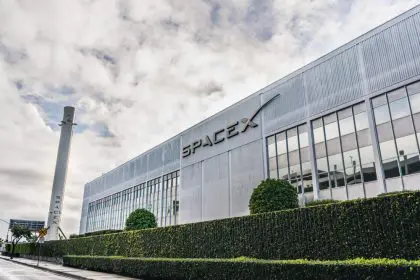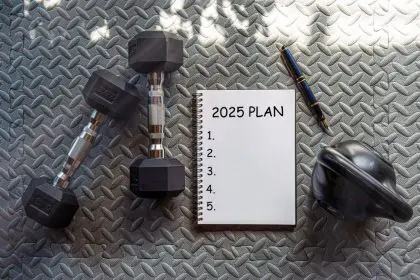Houston, long dubbed Space City, has anchored America’s cosmic ambitions since NASA planted its Johnson Space Center there in 1961. What began as a government-led enterprise on a donated 1,000-acre plot has morphed into a bustling hub where public and private forces collide to redefine humanity’s reach. In 2025, the city’s space economy thrives through three distinct channels, blending NASA’s legacy with the ingenuity of commercial players. The result is a dynamic ecosystem that employs thousands, pumps billions into Texas, and sets the stage for lunar landings and beyond.
The numbers tell a compelling story. NASA’s annual spending in Texas exceeds $2.5 billion, with the Johnson Space Center alone supporting over 11,000 jobs, from federal workers to contractors. Meanwhile, private ventures like Axiom Space, Intuitive Machines, and Collins Aerospace have turned the Houston Spaceport into a launchpad for innovation. Together, these efforts ripple outward, contributing to a global space economy projected to hit $1 trillion by 2040. Houston’s role, rooted in history and surging into the future, remains undeniable.
NASA’s enduring engine
The Johnson Space Center, sprawling across 1,620 acres southeast of downtown, remains the beating heart of Houston’s space economy. Established as the Manned Spacecraft Center, it was renamed in 1973 to honor Lyndon B. Johnson, a Texan who championed NASA’s early days. Today, it oversees astronaut training, mission control, and the Artemis program, which aims to return humans to the moon by 2026. Its facilities, including a 6.2-million-gallon pool for spacewalk simulations, keep Houston at the forefront of human spaceflight.
Beyond its operational heft, the center drives economic activity. In 2023, NASA’s nationwide efforts generated $75.6 billion, with the Moon to Mars initiative accounting for $23.8 billion and nearly 100,000 jobs. Texas reaps a hefty share, with local contracts fueling aerospace, biomedical, and tech sectors. The center’s presence has also spurred real estate booms and educational investments, transforming once-rural Clear Lake into a suburban tech haven with homes now fetching up to $1.3 million.
Private pioneers take flight
The rise of private companies marks the second pillar of Houston’s space ascent. Axiom Space, founded in 2016, plans to build private space stations linked to the International Space Station, with its Houston Spaceport campus set to employ 1,000 by year’s end. Intuitive Machines, another local star, made history in 2024 by landing a lunar craft, the first U.S. moon touchdown since 1972. Collins Aerospace, meanwhile, crafts next-generation spacesuits for lunar missions, building on a $97.2 million NASA contract.
These firms, anchored at the Houston Spaceport near Ellington Airport, signal a shift from government monopoly to commercial vigor. The spaceport, spanning 422 acres, has drawn over 1,800 high-paying jobs since its inception, with infrastructure like a new taxiway easing aerospace operations. Partnerships with San Jacinto College’s EDGE Center further bolster the talent pipeline, training students for roles in this expanding frontier. Houston’s private sector is no longer a NASA sidekick—it’s a co-star.
A unified ecosystem emerges
The third driver is the synergy between NASA, private firms, and local institutions, creating a cohesive space economy. The Texas Space Commission, launched in 2023 with $350 million in state funding, exemplifies this unity. It supports the Texas A&M Space Institute, a 40-acre research hub near Johnson Space Center, set to open in 2027. This facility will house experiments bound for the International Space Station, reinforcing Houston’s role in low-Earth orbit commerce.
Collaboration extends beyond infrastructure. Companies like Intuitive Machines work with NASA on Artemis missions, while Axiom Space preps for private astronaut trips, with its fourth mission slated for mid-2025. The Greater Houston Partnership and Bay Area Houston Economic Partnership amplify these efforts, attracting investment and fostering community ties. This interconnected web ensures Houston doesn’t just rest on Apollo-era laurels, it builds a future where space tourism and Mars missions feel within reach.
Challenges amid the boom
Growth doesn’t come without hurdles. As Houston’s economy diversifies, trade, health care, and energy now rival aerospace, NASA’s relative influence has dipped since the 1960s. Competition from states like Florida and Colorado, with their own space hubs, looms large. The Texas Space Commission aims to counter this by unifying resources, but sustaining talent and funding remains critical. Local leaders push for more public-private deals to keep pace with a global industry growing at warp speed.
Still, the city’s advantages shine. Its 23,000 aerospace professionals, bolstered by 56,000 annual graduates from regional universities, form a robust workforce. The Houston Spaceport’s urban proximity, unlike rural launch sites, draws companies seeking accessibility. With NASA spending 51% of Johnson Space Center’s $4.6 billion budget in Texas last year, the economic dominoes keep falling, housing, taxes, and schools all benefit.
A cosmic future takes shape
Houston’s space economy in 2025 is a testament to adaptation. The Johnson Space Center, once a symbol of Cold War triumph, now partners with startups to tackle 21st-century challenges. Private ventures, backed by NASA contracts and state support, push boundaries in lunar tech and orbital commerce. Together, they position Houston as a linchpin in America’s next giant leap, from the moon to Mars.
The city’s legacy is secure, but its ambition burns brighter. As Artemis nears its lunar goal and private spaceflight scales up, Houston stands ready to claim the first words spoken on Mars. Its three-pronged ascent, NASA’s might, private innovation, and regional unity, ensures Space City isn’t just a nickname. It’s a promise.













